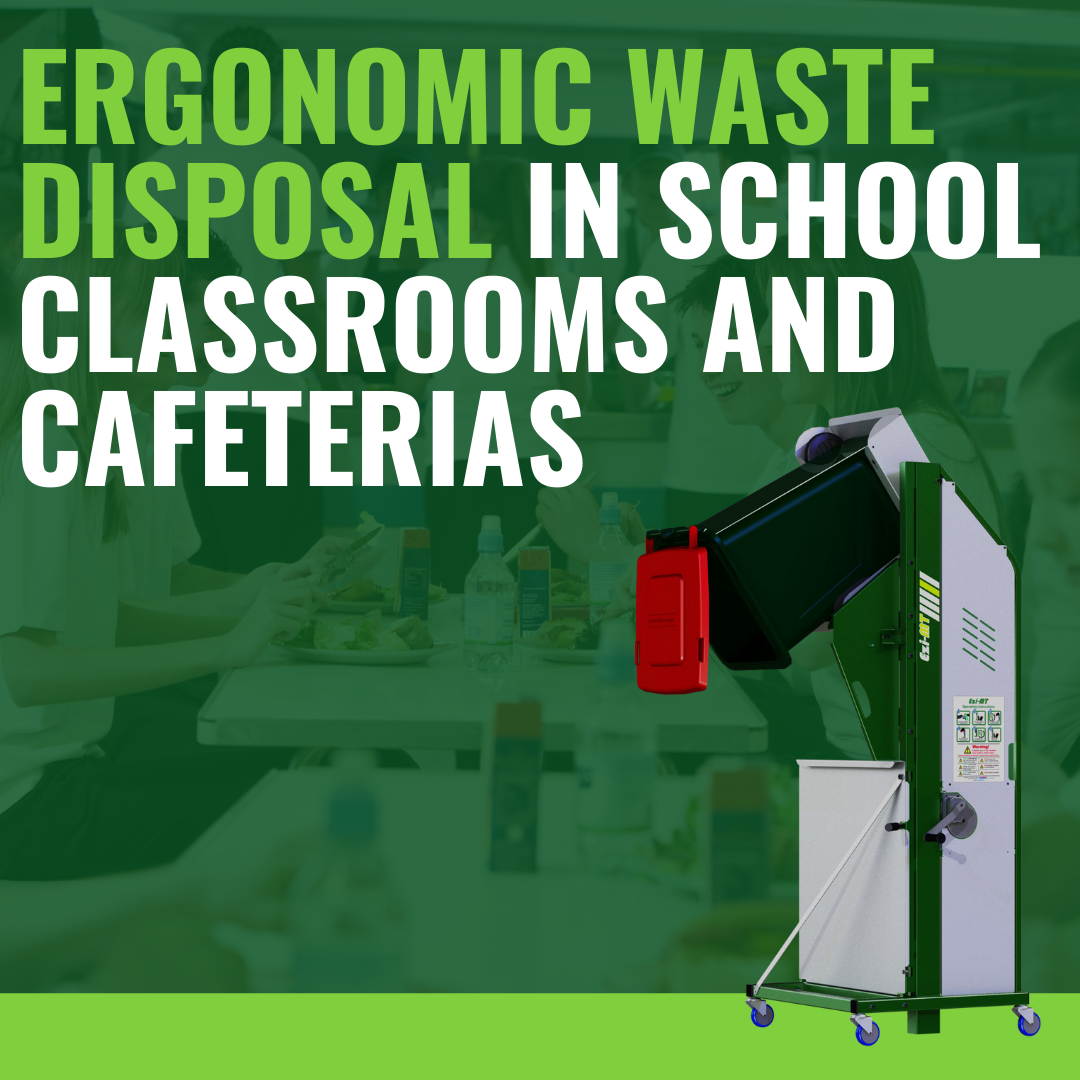We use cookies to make your experience better. To comply with the new e-Privacy directive, we need to ask for your consent to set the cookies. Learn more.
Ergonomic Waste Disposal in School Classrooms and Cafeterias
Public schools across the nation struggle with ergonomic waste disposal, but a 2010 study out of Minnesota highlights the issue with hard data.

First of all, school children have a habit of throwing away a lot of food. In fact, 23.9 percent of the school waste identified in the study consisted of uneaten food. That's the highest single type of waste generated in Minnesota's public elementary, middle, and high schools.
Recyclable paper was the second largest source of waste uncovered by the study. Of the 483,520 pounds of waste generated by Minnesota K-12 public schools every day, 23.5 percent was comprised of paper.
Each of these leading types of waste pose particular ergonomic risks for staff assigned to removing them from the facility. Emptying the heavy loads of waste generated in school classrooms and cafeterias can lead to a variety of costly musculoskeletal disorders. The solution is to provide trash can dumpers that remove ergonomic hazards from public school staff involved in waste disposal.
Measuring the Ergonomic Risk for Waste Disposal in Schools
Before we get into the ergonomic interventions that can keep staff safe, it's important to understand how hazardous it can be to empty waste receptacles in school settings.
"Workers involved in waste collection may be at risk of developing musculoskeletal disorders (MSDs) from workplace activities which force them to work beyond their physical capacities (i.e., lifting an item that is too heavy, or lifting too often, or working in awkward body postures)," reports the Occupational Safety & Health Administration.
The statistics bear out this warning. In 2014, the latest year for which statistics are available, employees involved in refuse and recyclable collection suffered injury rates of 325.2 per 100,000 workers. Compare that to the rate of 103.1 injuries causing missed work time per 100,000 workers in the manufacturing industry, which has a reputation of being quite hazardous.
The Centers for Disease Control identify five particular motions that place workers at a higher risk of injuries. These include:
- Bending and/or twisting.
- Pressing against hard or sharp surfaces.
- Repetitive motions.
- Lifting, carrying, or pushing heavy loads.
- Holding the same bodily position for long periods of time.
When school staff empty large, heavy trash cans, they may be subjected to several of these risks simultaneously.
Bin Dumpers for Waste Handling in Public School Settings
The two leading types of waste generated in schools, uneaten food and large loads of paper, both carry the distinction of being particularly heavy when handled in bulk. Bin Dumpers from Solus Group are designed specifically to combat the ergonomic risks of emptying such large, heavy garbage cans.
The EZI-MT Manual Bin Dumper is ideal for most schools. It offers a low price-point and manual lifting/tipping action. This portable device can safely lift and empty up to 143 pounds of waste. A unique lift-and-tip motion keeps the weight centered over the machine's footprint for extra stability.
Even better, the EZI-MT is designed for both indoor and outdoor use. Easily load cafeteria and/or classroom waste onto the secure cradle and turn the winch for simple, safe emptying of heavy trash cans.
With Bin Dumpers from Solus Group, schools can keep staff safe while provide greater efficiency in the waste disposal process. These benefits will pay for themselves with the first averted injury.
References:
“Ergonomic Guidelines for Manual Material Handling.” CDC. Centers for Disease Control and Prevention, National Institute for Occupational Safety and Health, 2007. PDF. 21 Sept. 2016.
“Green Job Hazards: Waste Management and Recycling: Collection - Ergonomics.” OSHA. Occupational Safety and Health Administration, U.S. Department of Labor, n.d. Web. 21 Sept. 2016.
Joseph, Brian. “Recycling is a Feel Good Activity, But Not for Workers Hurt or Killed on the Job.” Fairwarning. FairWarning Inc., 12 Apr. 2016. Web. 21 Sept. 2016.
“School waste study.” PCA.State.MN. Minnesota Pollution Control Agency, Sept 2010. Web. 21 Sept 2016.
